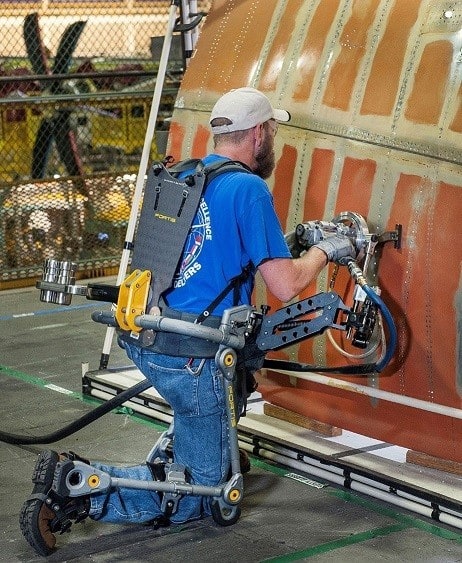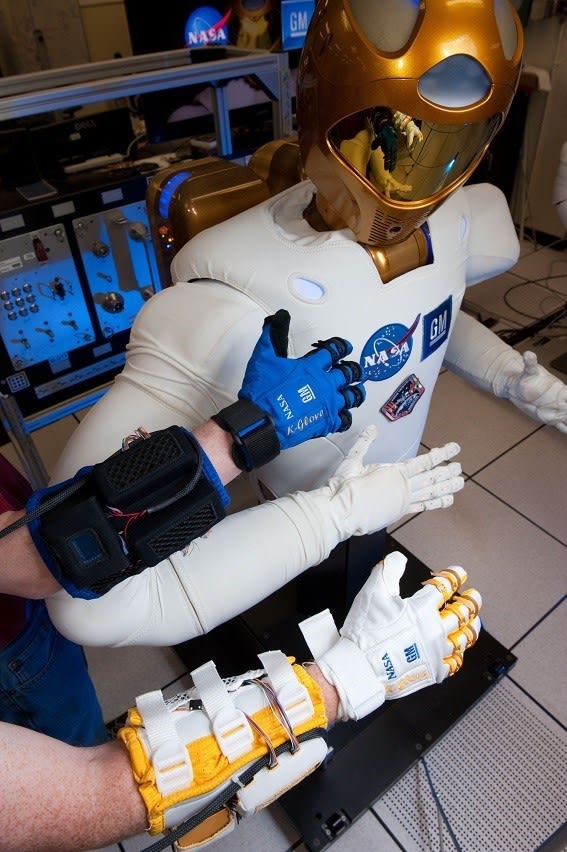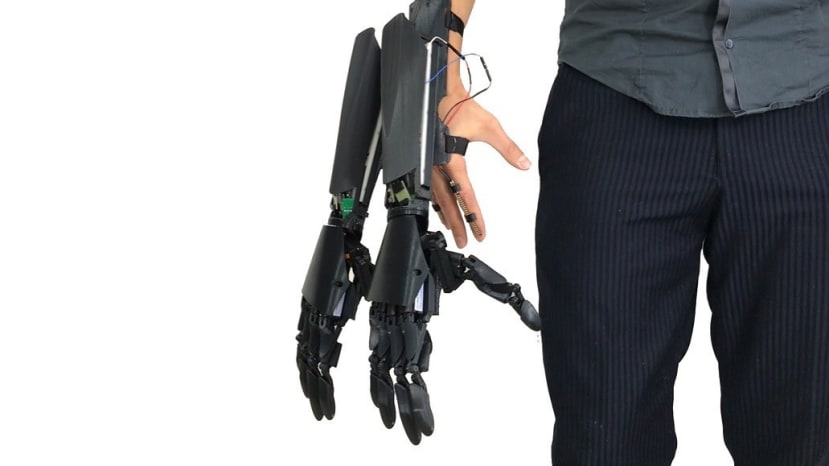#3 Augmented Humans; Can Machine-Like Humans Compete with Human-Like Machines?
Follow articleHow do you feel about this article? Help us to provide better content for you.
Thank you! Your feedback has been received.
There was a problem submitting your feedback, please try again later.
What do you think of this article?
Listen to The DesignSpark Podcast
#3: Can I Get an Upgrade?
The desire to improve lies deep within human nature and nothing escapes this drive, whether it’s the world around us or our own selves.
We have imposed our will on nature by activities such as breeding crop species and animals to increase farming yields. When any great invention or new gadget is revealed to the world, work is already underway to deliver the next, new and improved version. And there is the irresistible attraction of self-improvement – from training to be a better version of ourselves as individuals, to the adulation we hold for record-breakers who push human achievement to new heights.
Today, with rapid advances in technologies from neuroscience and bionics to machine learning and 3D printing, it’s just a small step from being the “best version of me” to creating the “augmented me”.
We’ve Got Competition
There are good reasons for us to want to become superhuman: stronger, smarter, faster, healthier. If we are concerned about losing our place in the world to machines, what better way to compete than to become (at least part) machine ourselves? Wearable robotics provides a striking example of how this is happening. It’s a simple and cost-effective automation solution, combining the powerful functions of the human brain to coordinate movement, balance, pattern recognition, and our ability to adapt easily to various tasks, with the strength and endurance of a machine.
According to Wintergreen Research, the market for wearable exoskeleton robots could grow to over $5 billion in the next six years, driven by interest from industrial and military sectors as well as medical rehabilitation. The Wearable Robotics Association (WearRA) has emerged to promote the interests of the industry.
Figure 1. The FORTIS exoskeleton enhances the physical capabilities that workers already have by increasing endurance and productivity. (Image: Lockheed Martin)
Exoskeletons are already available in various forms for industrial uses, such as the “chairless chair” to assist workers who need to stand or crouch for long periods, and tool-holding exoskeletons such as the Fortis (figure 1). NASA, working with General Motors, has developed the Robo-Glove, a grasp-assist device (figure 2) that can assist with repetitive tasks or help users grip tools for extended periods.
Figure 2. The NASA/GM Robo-Glove can be licensed for commercial opportunities. (Image: NASA)
Earlier this year, a Toyota plant in the USA selected a shoulder exoskeleton (figure 3) as mandatory safety equipment to protect workers in its welding area against injuries due to overload or fatigue.
Figure 3. A shoulder exoskeleton can reduce fatigue for production workers. (Image: Levitate Technologies)
Supernumerary Robotics
There are projects seeking to take this even further. YouBionic, founded by Federico Ciccarese, has created a double-hand prosthesis (figure 4), aiming to extend natural human capabilities. Ciccarese had been fascinated by the notion that the human brain may possess untapped capacity to control movement and sought to utilise that latent processing power for augmentation. The robotic hands are directed by muscular impulses, using individual finger movements to control each hand separately. Whereas medical prosthetics are known to be expensive, low-volume products that present affordability challenges, this commercial application leverages Arduino and 3D printing technologies to keep costs down.
Figure 4. The double robotic hand can give humans four arms instead of two. (Image: YouBionic)
Smart Drugs
The prospects for chemically enhancing the body and mind are also well known. Athletic sports continue to be rife with claims and counter-claims about substances used to enhance physical performance – taking advantage of therapeutic use exemptions to utilise asthma medication in cycling being one of the most recent bones of contention.
On the cerebral side, drugs such as Ritalin and Adderall used to treat conditions such as ADHD and narcolepsy have been claimed to enhance the powers of concentration for non-sufferers, although some studies have suggested they make the user feel they are achieving more when in fact they are not. Now, a new study has stated categorically that the drug Modafinil enhances cognitive function and is safe to use. Although long-term effects have not been studied, and there are caveats regarding unsupervised use and regulation, this could be the first smart drug. We may find students and workers under increasing pressure to use smart drugs to keep up with colleagues and competitors.
Smarter Thinking
There are various means of stimulating the brain and recording its activity, typically associated with studying and treating neurological disorders, which could instead be used to enhance human cognitive powers. These tend to focus on electrical or magnetic stimulation using non-invasive electrodes placed against the skull or deep-brain stimulation using implanted electrodes.
Despite obvious drawbacks to their use for augmentation, the Brain-Computer Interfaces (BCI) that enable this stimulation and recording -- also known as Neural-Control Interface (NCI), Mind-Machine Interface (MMI), Direct Neural Interface (DNI), or Brain–Machine Interface (BMI) – have exciting possibilities.
Basic commercial BCIs are already used in equipment that lets people with neurodegenerative diseases control computers or electronic devices using brain waves, for activities such as writing documents or using text-to-speech. An advanced BCI was recently announced that promises more natural synthesis for the speech-impaired by directly interpreting brain signals used to control speech-related movements of the tongue, lips, jaw, and larynx.
Research into improving BCIs is pursuing many avenues, including nanostructure-based sensors, electromyographic recording, and better decoding algorithms, which could enable cybernetic implants for brain augmentation. Brain-to-brain communication has already been demonstrated using rats: knowledge of a simple task, acquired by a sample of rats, was recorded and transferred directly to untrained receiver rats, improving their performance of the same task.
An End to Death?
There are other aspects of augmentation, besides increasing physical capabilities or industrial productivity. Although ethical issues need to be considered, there are fascinating prospects for eliminating certain types of diseases or genetic conditions. And we are all charmed by the prospects for living longer lives and remaining active and independent throughout.
The Calico project, headed by a team of neuroscientists, has set out to study mechanisms of human aging with the express aim to overcome these factors and so extend what it terms “human healthspan”. Calico researchers have contributed to knowledge in areas such as inhibiting stress responses in cells of the brain and spinal cord, to combat deterioration of the nervous system. This could have benefits for sufferers of degenerative conditions such as Vanishing White Matter (VWM) and could also be used to counter the normal ageing of the nervous system.
Ethics and Outcome
Contemplating the ethics of human augmentation leads us to the debate over the transhumanism movement, which believes in harnessing technologies to greatly enhance human mental and physical capabilities. Proponents of transhumanism feel this could at least allow lifespans that are indefinite and controllable – if not infinite. Not surprisingly, opinion is divided; transhumanism has detractors who fear a dystopian outcome, believing that humans’ relationship with technology is more complicated than transhumanist supporters believe. and that technology is not simply a servant that will always do our bidding.
We could be marching towards immortality, or sleepwalking into a darker future, but there are surely many technological challenges and philosophical arguments to be resolved along the way. We can be sure that our innate desire to improve everything, and our insatiable curiosity, will drive us along that path, whichever the destination.
For a more light-hearted take on augmented humans head to Apple Podcasts or Spotify and download The DesignSpark Podcast.
 |
 |
 |










